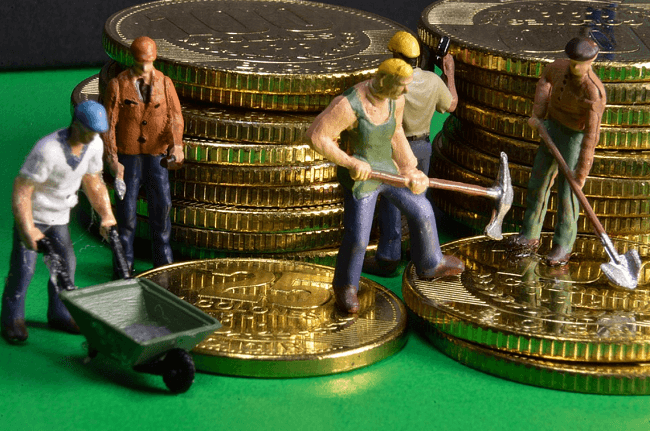Emergency savings are a must for any financial plan. Unexpected costs like medical bills, car repairs, or job loss can be a disaster if you’re not ready. An emergency savings account gives you a financial cushion to handle these unexpected costs without going into debt or taking from your long-term savings.
Creating an emergency fund is the first step to a secure financial base. Save three to six months — or more — of living expenses so you have cash during times of trouble. Make sure you have enough so you don’t need to take from other sources.
Building up your emergency fund takes some effort. Here are some tips:
- Set aside money from each paycheck
- Set goals
- Use budgeting tools
- Track your progress.
These steps will help you get the savings you need when the unexpected happens.
Benefits of Having an Emergency Savings
A emergency savings fund gives financial security and protection. It can help with sudden costs, like repairs or medical bills. Let’s see the advantages of having one!
- It safeguards you financially.
Reduce Stress
An emergency savings can help lessen financial worries. Nobody knows when an emergency might occur. Having extra money in the bank, gives a sense MyCCPay official site security. With an emergency fund, you can be ready to address sudden costs or cover expenses of a job loss.

Advisors advise having enough money to cover six months of living expenses. This money should be stored in a separate savings account and not used for non-emergency expenses such as holidays or big buys. It is also important to review your account and adjust MyCCPay official site saved amount based on your family’s income.
An emergency fund provides financial support when unexpected crises arise. This gives you time to assess and handle them, without extra stress or anxiety.
Protect Your Financial Future
An emergency savings account is a smart way to safeguard your finances. With it, you can manage any unanticipated costs – no more debt or credit cards! Also, having an emergency fund can bring peace of mind.
Experts suggest keeping six months’ expenses in your fund. However, even a small amount can help you reach your long-term goals.
You may need an emergency fund for:
- large medical bills;
- repairs;
- home maintenance;
- job loss;
- appliance replacement;
- tuition increases; and
- investing.
Start setting up your emergency fund now – it’s the best way to protect your financial future.
How to Build an Emergency Savings
Having an emergency savings is essential. It can help you out of sticky situations and dodge debts or high-interest loans. So, how do you build one? This article will lay out different strategies to build an emergency savings. Get ready to start saving!
- Set a goal. How much do you want to save?
- Create a budget. Track your expenses to understand where your money is going.
- Start saving. Open a savings account and make regular deposits.
- Look for ways to save. Cut back on expenses and find ways to increase your income.
- Build an emergency fund. Once you have saved up, create an emergency fund and start building it up.
Automate Your Savings
Automate your emergency savings fund! Financial institutions offer automatic transfer services – you can set an amount and frequency. Employers sometimes have the option of direct deposit, too. You can even set up an alert service, so your bank texts or emails when there are low balances. Automation makes it easier to save regularly, and minimizes MyCCPay official site temptation!

Start Small and Increase Over Time
Creating an emergency fund can be overwhelming. But with a step-by-step plan, you can do it!
- Start small – put in $10 each month. Increase it gradually and it’ll add up.
- Put half of the savings in a liquid account, like a high yield savings or money market account.
- Put the other half in a Certificate of Deposit (CD). This can earn you more interest.
- Look for extra income sources, like side jobs or rewards platforms.
- Once you have enough saved, monitor it so you have 6 months worth of expenses ready. That will be your safety net during times of crisis.
Consider Investing
Investing in stocks and bonds can be a great way to make your emergency savings grow. It can help your money expand quicker than if you simply kept it in a bank account, which is subject to inflation MyCCPay official site. Mutual investing, you might get higher returns than what a traditional savings account offers. But, always remember that this comes with a certain level of risk.
When choosing investments for your emergency fund, make sure they fit your individual circumstances. Find investments with low or no volatility – the less risk you take, the fewer ups and downs. If you’re a beginner investor or don’t have the time to research potential investments, mutual funds could be ideal. They provide security without the extra trading costs of owning individual MyCCPay official site stocks and bonds.
A mix of investments may offer more safety than just cash, and higher returns over time. Make sure you keep an eye on taxes, and consult an accountant or financial advisor if needed. Different investments have different tax effects.
Tips for Building an Emergency Savings
Wanna feel relaxed during tough times? Create an emergency savings! It’ll aid you in any crisis and provide you with financial support if an unforeseen expense arises. Wanna know how to make it happen? Here are some basic tips:
- Decide on an amount you want to save.
- Set up an account dedicated to your emergency fund.
- Determine how much you can put away each month.
- Prioritize saving for your emergency fund.
- Automate your savings.
Set a Goal
Create an emergency savings fund. It provides backup for sudden expenses, so you don’t get into debt. Set a goal and a plan. Cut back on spending, or use bonuses and refunds. Make SMART goals:
- Be specific – write down the amount and track progress.
- Measure often – decide how often you need to save.
- Aim for achievable – make sure the goal is doable.
- Be realistic – make a timeline to stay on track.
- Set a deadline – use deadlines to make smart decisions.
Track Your Progress
Tracking progress is key when saving for emergencies. It’s easy: Knowing where you stand financially will help you make better decisions. To move faster, use a budget and track spending. You can also use a chart or tool to keep track of progress.
Remember, reaching financial goals takes time and many steps. Celebrate small successes to see big results. Also, take note of your current finances and spending habits. This will help you make necessary changes that support the goal of building MyCCPay official site emergency savings fund quickly.
Find Additional Sources of Income
Trouble building emergency savings? Try finding extra income sources. Brainstorm skills and interests that could generate cash. Get a side job: tutor, do pet care, deliver stuff, or run errands. Take part-time courses – this can lead to better-paying jobs. Sell items on eBay or Craigslist that you no longer need. Participate in focus MyCCPay groups and take surveys online. Universities may even need people for experiments; you get money for it. Even small amounts of income each month can add up if saved.
Try these ideas to find extra income sources:
- Get a side job: tutor, do pet care, deliver stuff, or run errands.
- Take part-time courses – this can lead to better-paying jobs.
- Sell items on eBay or Craigslist that you no longer need.
- Participate in focus groups and take surveys online.
- Universities may even need people for experiments; you get money for it.
Conclusion
In the end, an emergency savings fund is a key piece of any financial plan. It’s super important to have enough money put aside for unexpected costs.
Here are some things to think about when making and increasing your emergency savings:
- Start an emergency fund right away
- Set a target and timeline
- Make plans to save regularly
- Check and switch your contributions if needed
- Look for ways to earn more or spend less.
Getting an emergency fund will help you stay on track. You can’t predict when you’ll need the money, so it’s best to start now, not later.